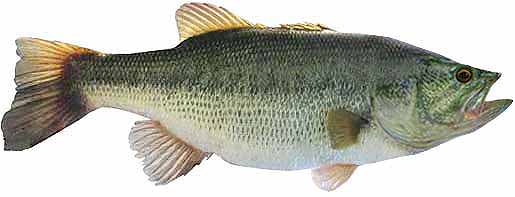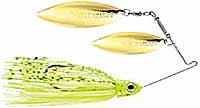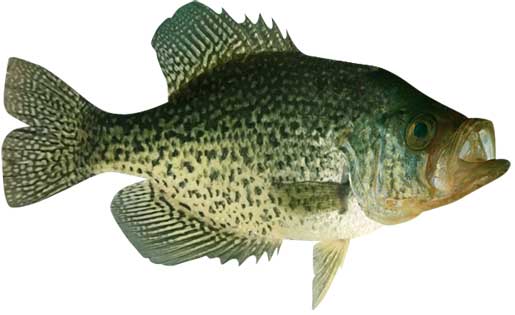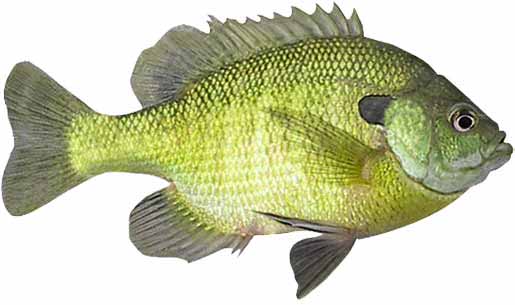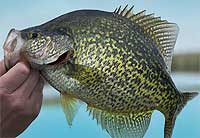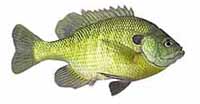Fishing Report For Morse Reservoir, IN
By Rick Seaman
Last updated on .
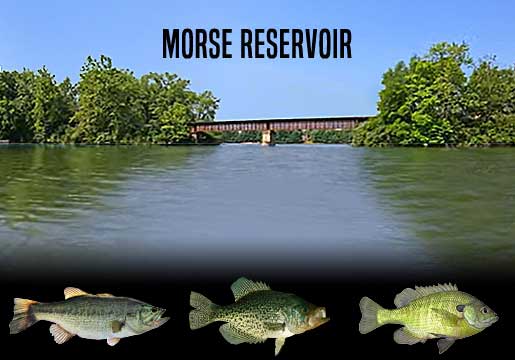
Fishing Reports
Popular Fish Species Morse Reservoir, IN
Largemouth Bass
Current Report: Fair To Good
Fishing for largemouth bass has been good for a couple years now at Morse Reservoir. According to reports of event standings, by the Stars and Stripes Regional Bass Circuit, it consistently takes a limit of bass averaging 2 3/4 pounds to 3 pounds, or more, to take the top prize. Big bass of these events is most often in the 5 lb to 6 lb range.
FALL. Now that Fall has arrived, bass here have moved shallow, following schools of baitfish into coves and shallow bays around 8 to 20 feet of water. Currently topwater, jerkbaits, crankbaits, and slow-rolled spinnerbaits are catching most of the bass. Later in Fall, as deeper water cools, bait and bass move out to ledges, channel edges, points and humps where flutter spoons, jigs and drop shots are often good choices.
WINTER. Winter will isolate largemouth around slightly deeper structure, flats, points and creek channels. They can be found from 12 to 30 feet deep. Here they hold, feeding less frequently, awaiting warmer water to return in Spring. Slow presentations are key to getting bites. On warmer days, especially during late afternoons, bass may move into 6 to 15 feet of water to feed.
SPRING. Once water temperatures rise into the low 60's, largemouth will move from deep wintering holes, to shallower water nearby spawning areas. Vibrating jigs, jerkbaits and spinnerbaits typically get bites just away from the shoreline. At this time they are feeding aggressively in about 6 to 15 feet of water, and preparing for the spawn. Once water warms into the mid to high 60's, they will move into 3 to 6 feet of water, and create nests, then lay their eggs. Immediately afterwards, females move to deeper water and males remain to guard the eggs, and then the fry. After a couple weeks, the males also move to slightly deeper water. Deep-diving crankbaits, vibrating jigs, plastic worms and swimbaits are catching bass during this period.
SUMMER. Water temperatures will warm considerably in Summer. Bass will feed shallow, early and late in the day, where they will be caught in 8 to 15 feet of water. Topwater, square-bill crankbaits and spinnerbaits. Wacky-rigged stick worms always catch finicky bass when the bite is slow. Largemouth bass here feed on gizzard shad, threadfin shad, small sunfish and crawfish. During the hotter parts of the day, they are being caught on points, channel edges, and ledges 15 to 30 feet deep.
Black Crappie
Current Report: Fair To Good
Crappie fishing runs hot and cold in Morse Reservoir. But, find the crappie, identify the right depth and experiment to find the best bait, and you can have a great day crappie fishing here. Many locals report better fishing conditions during the week, without all the weekend boating traffic.
FALL. Baitfish, which are moving into shallow flats, coves and bays, are drawing crappie into these areas. Nice crappie are being caught while feeding heavily, in preparation for the cold Winter. Anglers report that 8 to 20 feet of water is where most bites are coming. Minnows, hair jigs, and crappie jigs, are good options during this feeding marathon. Late fall starts the migration deeper, toward winter holding areas, for both crappie and baitfish. Small flutter spoons, fished in 15 to 20 feet of water, are a good option during this transition. Good results are coming around points, creek channels, and brush piles.
WINTER. Once the shallows start cooling rapidly, crappie will migrate to deeper holding areas, mostly off shore. At this time they are typically caught using a very slow presentation, in 12 to 25 feet of water. Most are caught around deep brush piles, creek channel bends, submerged timber, and main-lake structure. If they are suspending in open water, they often relate to some cover, or structure change, directly below them. During warming trends, especially warm afternoons, they are drawn into 8 to 15 feet of water to feed.
SPRING. In early Spring, crappie begin staging in 6 to 15 feet of water, just outside spawning bays and shallow flats. Spring is prime time to be on the water, as crappie have moved shallow to spawn. At that time, they are typically caught in 3 to 8 feet of water. Vegetation, docks, brush and wood are where most anglers catch crappie using small crappie jigs or live minnows. After the spawn, crappie typically move outside the spawning area and hold on cover close by, in 12 to 15 feet of water. Once they move deep, anglers report success using fish finders and forward facing sonar to locate schools of crappie, which tend to stack vertically around cover. Light tackle, with 4 lb to 8 lb line, is a popular choice. Later in Spring, focus on shallower flats around 10 to 15 feet deep.
SUMMER. Water temperatures get quite warm, and crappie fishing is usually pretty good. They feed in 8 to 15 feet of water early and late in the day, until the hot Summer sun causes them to retreat to depths of 10 to 20 feet. Also, a few have embedded in the shade of slightly shallower vegetation. This is a good time to focus around brush piles, standing timber, deep lay downs, bridge pilings and deeper docks. Anglers are also locating schools of crappie hanging over deep structure and around creek channel edges, using fish-finder electronics.
Bluegill
Current Report: Fair To Good
Bluegill are a primary food source for predator fish in Morse Reservoir, as well as a sport fish for fun, and table fare.
FALL. Cooling, Fall weather drops the water temperature in the shallows and is luring bluegill into the 5 to 12-foot shallows along the shoreline. Steeper banks and shallow, weedy areas with drop-offs are holding bluegill. Later in Fall, as the shallows get colder, bluegill will move into 8 to 15 feet of water, in the same areas.
WINTER. Cooling shallows have driven the bluegill back to deeper structure with cover, in water ranging from 10 to 20 feet deep. In areas with no cover, anglers are finding them along points and humps with sharp drops into deeper water. In areas where the lake ices over, ice fishing produces good catches. Most successful anglers are slowing down their presentation in this cold water.
SPRING. In early Spring, bluegill migrate from winter holding areas toward the shoreline areas, and are typically caught around 2 to 8 feet deep. As the water warms to the mid 70's they will begin the spawning ritual, building nests in 1 to 3 feet of water. Many of the bigger bluegill prefer to spawn a bit deeper, depending on water clarity. After the spawn, bluegill drop a few feet deeper. Small spinners and swimbaits, or jigs tipped with small pieces of nightcrawlers are good choices for catching a lot of bluegill in spring. A hook, line, weight and bobber, with small pieces of worms, also catches lots of bluegill.
SUMMER. Following the spawn, most of the bigger bluegill migrate to deeper water, around 5 to 15 feet deep. They prefer rocky or weedy areas, often hanging out on steep, rocky banks where they can move up and down to feed without having to travel a great distance. Small spoons, underspins, and mini-crankbaits are catching some of the bigger bluegill. Earthworms are also catching good numbers.
Fishing Video
Fish species to fish for...
Guide to fishing for largemouth bass, channel catfish, flathead catfish, black crappie and bluegill at Morse Reservoir in Indiana.
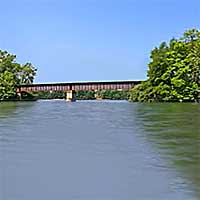 Morse Reservoir covers 1,500 acres, has 35 miles of shoreline, and provides a wealth of fishing potions. This is a scenic lake surrounded by waterfront homes and trees. This lake is a favorite of bass tournament anglers, as well as crappie and bluegill anglers. Popular fish species found in the reservoir include largemouth bass, smallmouth bass, crappie, bluegill and catfish.
Morse Reservoir covers 1,500 acres, has 35 miles of shoreline, and provides a wealth of fishing potions. This is a scenic lake surrounded by waterfront homes and trees. This lake is a favorite of bass tournament anglers, as well as crappie and bluegill anglers. Popular fish species found in the reservoir include largemouth bass, smallmouth bass, crappie, bluegill and catfish.
Primary fish species to catch
Click images for fishing tips and details about each species.
Today's Weather & Forecast
Fishing Boat Rentals
Click here for fishing boat rentals.
Marinas
Click here for marinas.
Public Boat Launch Ramps & Landings
Click here for boat ramps.
Fishing License
Click here for a Indiana Fishing License.
Map - Fishing & Access
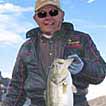 Rick Seaman is a fishing enthusiast with over five decades of fishing experience, a retired tournament fisherman, author of numerous published articles on fishing, and co-author of the book "Bass Fishing - It's not WHAT you throw, It's WHERE you throw it".
Rick Seaman is a fishing enthusiast with over five decades of fishing experience, a retired tournament fisherman, author of numerous published articles on fishing, and co-author of the book "Bass Fishing - It's not WHAT you throw, It's WHERE you throw it".
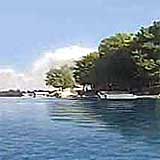 Contact Information
Contact Information
Morse Lake Marina
20999 Hague Rd.
Noblesville, IN 46062
317 984-3301
Fishing lakes in each state
102125
Morse Reservoir, Indiana Report
INDIANA


Bass, crappie and bluegill fishing in central IN.


